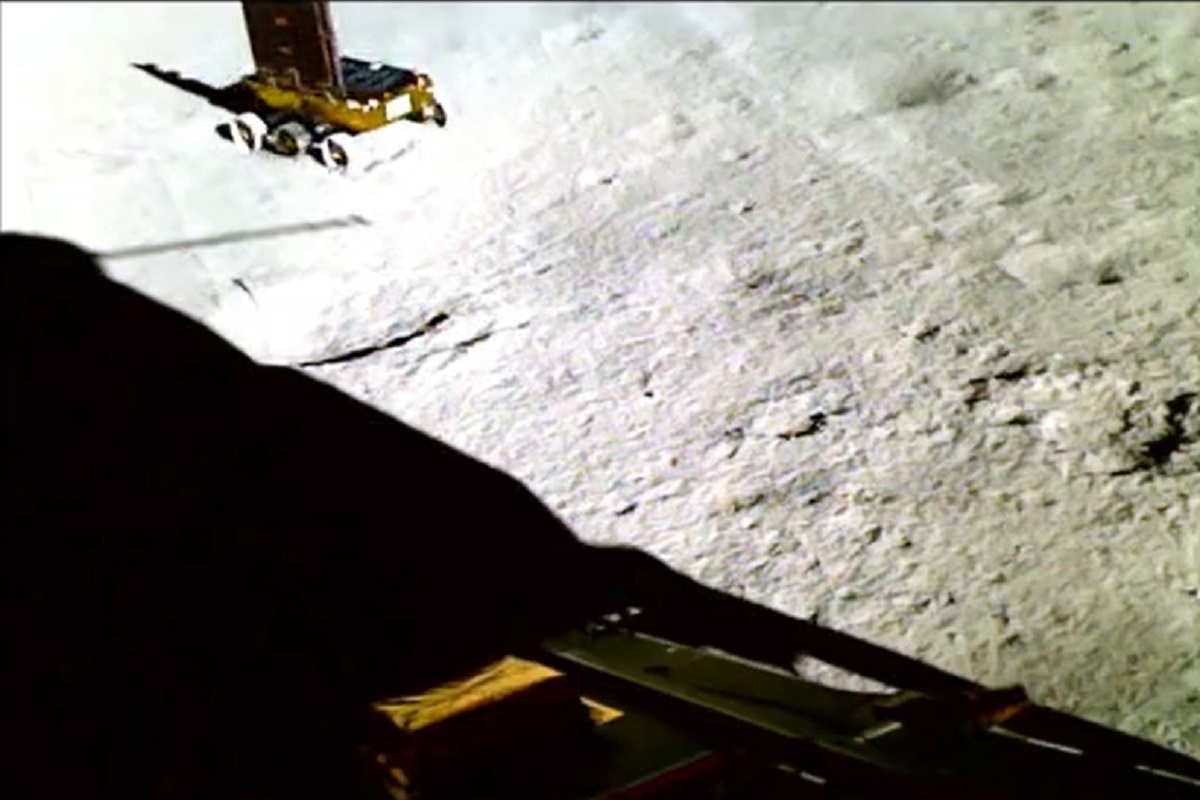Chandrayaan 3 latest update: The Indian Space Research Organisation (ISRO) on Thursday released a new video of Chandrayaan 3’s Pragyan rover searching for a safe route on the lunar surface. The video was captured by the Lander Imager Camera installed on Chandrayaan 3’s lander module Vikram.
“It feels as though a child is playfully frolicking in the yards of Chandamama, while the mother watches affectionately,” the ISRO wrote on X along with the video.
Advertisement
The rover is currently unearthing secrets of the lunar surface near the south pole region. Earlier on Tuesday, the Pragyan rover confirmed the presence of Sulphur on the Moon. Pragyan is actively looking for Hydrogen on the lunar surface.
The Laser-Induced Breakdown Spectroscopy (LIBS) instrument onboard Chandrayaan-3’s rover Pragyan made the first-ever in-situ measurements on the elemental composition of the lunar surface near the south pole region.
“These in-situ measurements confirm the presence of Sulphur (S) in the region unambiguously, something that was not feasible by the instruments onboard the orbiters,” the space agency said.
Chandrayaan 3 created a temperature profile of the lunar surface
On Sunday, lander Vikram sent its first observations recorded by the Chandra’s Surface Thermophysical Experiment (ChaSTE) payload it carried along with rover Pragyan. The ChaSTE recorded variations of temperature on the lunar surface. The ISRO shared a graph on X that showed the difference in temperature on the Moon’s surface and underneath.
At a depth of 8 cm, the payload attached to Chandrayaan 3’s lander Vikram recorded a temperature as low as (-) 10 degrees centigrade. With the gradual rise towards the surface, the temperature too could be seen rising. Above the surface, the graph showed a relative stagnancy in temperature between 50-60 degrees centigrade.











